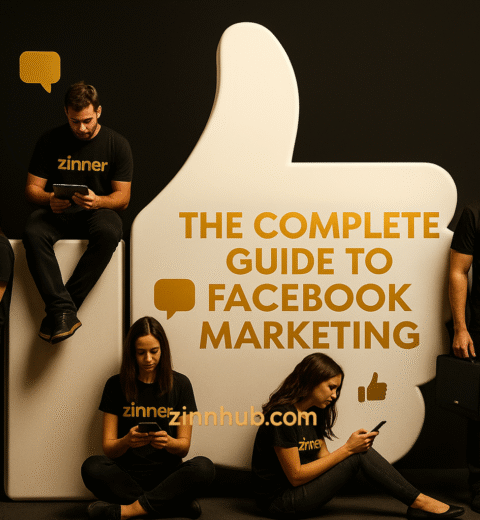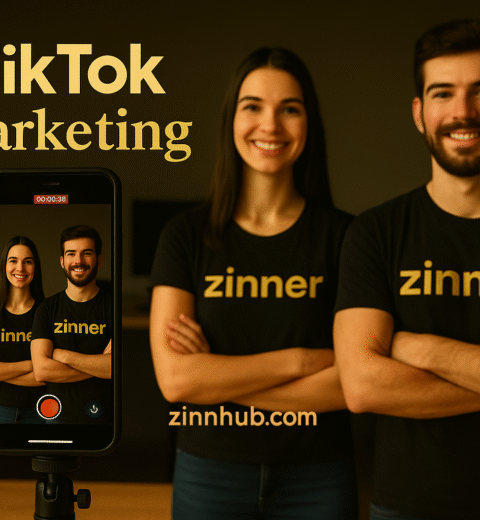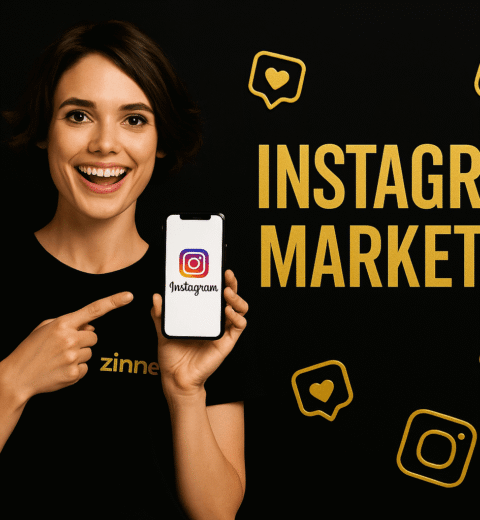Table of Contents
People are tired of being “sold to” because modern audiences are constantly bombarded with ads. Traditional ads are literally everywhere: skippable, scrollable, and ignorable – on their phones, in their inboxes, on social media, and even while watching videos or listening to music. People in today’s world prefer not to have their purchasing decisions dictated to them. They want to see someone authentic who they trust to use it first – real voices, genuine experiences, and trusted recommendations. That’s where influencer marketing comes in!
This partnership isn’t about running ads on social media or boosting your posts. It’s about partnering with real people – creators, thought leaders, and everyday personalities – who already have the attention and trust of your ideal audience.
Whether you’re a freelancer (Zinner) looking for more clients or a brand ready to grow, influencers can help you reach people in a way that feels natural, not forced. And in 2025, that kind of connection is more powerful than ever.
What Is Influencer Marketing?
Influencer marketing is simple: you partner with someone who has an audience, and they share your product or service.
But this isn’t just about follower count. It’s about influence – that trusted space where someone’s recommendation can actually drive action. From micro-influencers with niche audiences to creators with millions of followers, the key is authenticity and alignment.
Why Influencers Still Matter (Maybe More Than Ever)
- People trust people, not logos.
- Recommendations from influencers feel more like advice than ads.
- It’s targeted. Instead of trying to reach “everyone,” influencers help you reach the right ones.
- They create content that doesn’t feel like a sales pitch—it feels like a conversation.

Where Influencers Thrive: Platform by Platform
Still a go-to platform for influencers, especially in fashion, fitness, beauty, and lifestyle. Stories, Reels, and carousel posts allow creators to weave products into their everyday lives.
Pro Tip: Micro-influencers (10k–100k followers) often have higher engagement than big names – and they’re more affordable too.
TikTok
The king of creative content. TikTok influencers are experts at making content that’s raw, fun, and insanely shareable. A 15-second clip can literally sell out your product overnight.
Pro Tip: Let the influencer have fun. Entertainment is everything on TikTok.
👉 TikTok Marketing Strategy Guide
Often underestimated, Pinterest influencers are curators and creators. They guide users with tutorials, style boards, and product roundups—great for niches like DIY, weddings, fashion, and home decor.
Pro Tip: Ask influencers to create Pins that link directly to your site, blog, or portfolio.
Yes, LinkedIn has influencers. These are your thought leaders – consultants, founders, and industry experts. It’s ideal for B2B, professional services, and high-trust offers.
Pro Tip: Partner on content like carousels, thought pieces, or even LinkedIn newsletters.
Influencers on FB remain relevant, particularly for established communities and groups. Many influencers run Pages or Groups where they interact directly with followers.
Pro Tip: Host a Facebook Live with an influencer for product demos or “Ask Me Anything” sessions.
Twitter (X)
Influencers on Twitter are thought leaders, writers, and trendsetters. Their value is in their voice, not visuals. Perfect for industries like tech, finance, and news commentary.
Pro Tip: Aim to get mentioned in threads, not just retweeted. Influence lives in the conversation.

Influencer Marketing vs. Social Media Marketing: Not the Same Thing
This is where many people get confused. Social media marketing and influencer marketing aren’t the same. Here’s the difference:

Think of it like this:
Social media marketing is when you talk about yourself.
Influencer marketing is someone else telling people how awesome you are.
And let’s be honest – as a buyer, which do you trust more?
How to Start an Influencer Campaign (Step-by-Step)
You don’t need a massive budget or a famous celebrity. You just need a plan.
1. Get Clear on Your Goals
- What do you want?
- More leads?
- Better clients?
- Sales?
- Content you can reuse?
Set measurable goals. Example: “Generate 20 new leads in 30 days from 3 influencers” is much better than “Get more exposure.”
2. Pick the Right Platform
- Where is your audience hanging out?
- TikTok for Gen Z
- LinkedIn for professionals
- Pinterest for shoppers
- Instagram for lifestyle
- Twitter for industry niches
Start with one or two platforms, max. Focus beats being everywhere.
3. Find the Right Influencers
Here’s what to look for:
- Do they create excellent content?
- Are their followers real and engaged?
- Do they align with your brand?
- Have they worked with other brands successfully?
Use tools like GRIN, Upfluence, Brandbassador, or even just Instagram/TikTok search and hashtags.
4. Create a Brief (But Don’t Micromanage)
Influencers are creatives. Provide them with a framework rather than a script. Include in your brief:
- Campaign goals
- Product or service details
- Content requirements
- Hashtags and links
- Timeline
- Compensation details
- Creative freedom (they’ll love you for this)
5. Decide on Payment
You’ve got options:
- Flat fee per post
- Affiliate commissions
- Free product or service
- Bonuses for performance
- Nano and micro-influencers often accept products and perks. Just be upfront.
6. Launch and Track
Stay in touch. Support the influencer. Repost their content. Engage with their audience too.
Use project management tools (Notion, Trello, or even Google Sheets) to keep track of deliverables and results.
7. Measure What Matters
This leads us to the next critical section…
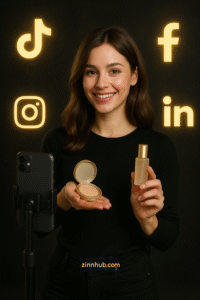
Beyond Gut Feelings: Measuring What Matters
Likes and comments can easily divert our attention. However, likes and comments do not generate income. If you’re a freelancer or service provider, you care about one thing: quality clients and revenue.
Here’s what to track in influencer marketing:
🎯 Lead Generation
- How many new leads or enquiries came from the influencer?
- Are they serious buyers or tyre kickers?
- What % of those leads turn into actual paying clients?
📈 Portfolio & Profile Visibility
- Is traffic to your Zinn Hub portfolio or website increasing?
- Are people spending time reviewing your work?
- Are specific case studies or projects getting clicks?
💰 Revenue Impact
- How much money did you actually earn from these referrals?
- Are these clients sticking around or coming back?
- Are they referring others or upselling?
🔍 Practical Ways to Measure Results
- Use unique tracking links or promo codes for each influencer
- Set up a dedicated contact form or intake question (“How did you hear about me?”)
- Track metrics before and after your campaign
- Compare lead quality and project scope pre- and post-influencer collab

Natalie’s Opinion: Influence Is the New Word of Mouth
In 2025, people don’t want ads shoved directly in their faces. They want authenticity. They want stories. They want real people recommending real things. That’s what influencer marketing is all about.
Whether you’re a creative freelancer, an agency, or a fast-growing brand, partnering with the right influencers can transform your business! And when you combine that with the right goals, the right measurement, and the right platforms, you’re no longer just marketing. You’re connecting. You’re influential. You’re growing.
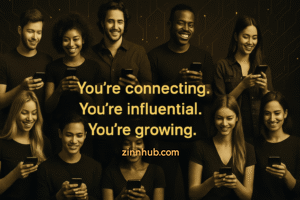
If you enjoyed this post or found it helpful, I’d love to hear your thoughts and opinions! Drop a comment below – whether it’s a question, a success story, or even a challenge you’ve faced with influencer marketing. Your feedback not only helps shape future content for Zinnectors but also creates space for others to learn from your experience. Let’s keep the conversation active!

